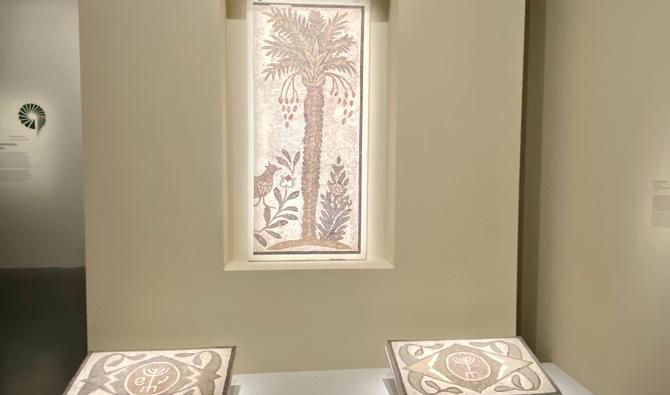PARIS: French President Emmanuel Macron recently attended the opening in Paris of an exhibition organized by the Arab World Institute (IMA).
“Jews of the Levant, a Millennial History,” now open to the public, covers 1,100 square meters of exhibition space and has been billed as a cultural event of international significance.
Documenting centuries of Jewish presence in Arab countries, it includes displays of archaeological remains, liturgical objects, jewelry, costumes, ancient manuscripts, paintings, and photographs, along with music and audiovisual installations.
Items have been brought together from international collections in France, the US, Spain, the UK, Belgium, Brazil, and Morocco, to highlight the ancestral cohabitation between Jewish and Muslim communities. Exhibits mark periods of rich artistic and intellectual creations as well as erratic violence.
General curator of the exhibition, Benjamin Stora, a university professor and historian specializing in the Arab Maghreb, is from the historic city of Constantine, in northeastern Algeria.
He noted that Jews were present in North Africa before the arrival of Christianity and that the Arabic language was imposed on the Jewish community from the ninth century.
“The Jewish community in the Arab Maghreb spoke only in Arabic, except in certain regions where they either spoke Berber or Latin, a mixture of Spanish, Hebrew, and Arabic,” he said.
Stora pointed out that there was an interpenetration of the three languages that reflected the cohabitation of the two communities which included expatriate rabbis from Andalusia who settled in Tlemcen, Constantine, and other cities in the Maghreb countries.
An undeniable imprint
He added that the Jews left an undeniable imprint on the cultural heritage of the region, especially when it came to craftsmanship. “My family members, originally from Constantine, were jewelers and made snake-shaped objects that women wore at parties and weddings.”
On political and religious clashes between the two communities, he said: “The period of French colonization and the Cremieux Decree of 1870 (granting French citizenship to Algerian Jews but not to Muslims) marked the separation between the two natives, Muslim and Jewish.”
He added that the outbreak of the war of independence saw four generations of French Jews position themselves alongside France, completing the rupture in relations between Muslims and Jews.
Preservation of memories
Stora, who has worked for more than 40 years on the history of the contemporary Arab Maghreb, highlighted the theme of the preservation of ancient memory.
He said: “We cannot reduce this essential question of clashes to the Palestinian issue, the colonization, or the departure of the Jews. It is also a question of preserving memories, which cannot wait for all political questions to be resolved.”
Denis Charbit, a professor of political science at the Open University of Israel and member of the exhibition’s scientific council, is responsible for the link between the IMA, the Israel Museum, and the Yad Yitzhak Ben-Zvi Institute.
A specialist in 20th-century Jewish history, he said the exhibition had an important role to play in the fight against ignorance and pointed out that the Jewish presence alongside the Arab and Berber populations dated back 2,000 years.
He noted that it was necessary to integrate the disruption and exile of Jews from Arab countries into the exhibition and that while relationships were not always smooth, they were not part of a black book either.
On the reasons behind the rupture, Charbit said that Arab nationalism had not shown itself to be sufficiently inclusive. “It was considered that the Jewish populations, who were also indigenous, Arab, and non-Muslim, were not part of the Algerian, Tunisian, Iraqi, or Yemeni nations.”
He added that the birth of Zionism and creation of the state of Israel presented Jews with the possibility for a final departure. Others who have benefited from the cultural and linguistic project of the Alliance Israelite Universelle organization in Baghdad, Morocco, Tunisia, Lebanon, and other parts of the Mediterranean, have gone into exile in France.
Stora said it was necessary to protect the heritage and ensure its transmission to future generations. “It is not a question of a single history, a single religion, a single culture, but a plurality of interventions, cultures, civilizations of languages, as well as a passage of populations,” he added.
Bridges
Charbit said: “In Israel, the Jews have a history with the Palestinians, even if it is written in tension and in blood. There are bridges and things in common.”
The Jews of the Levant in Israel had a sweet and sour relationship with their countries of origin, partly due to a feeling of exile, but they also felt nostalgia for the stories of a once harmonious social life, he added.
“The Holocaust black hole did not prevent European Jews from remaining connected to their European heritage. Maintaining this link is the great ambition of this exhibition,” Charbit said.
o This story originally appeared in French on Arab News en Francais

